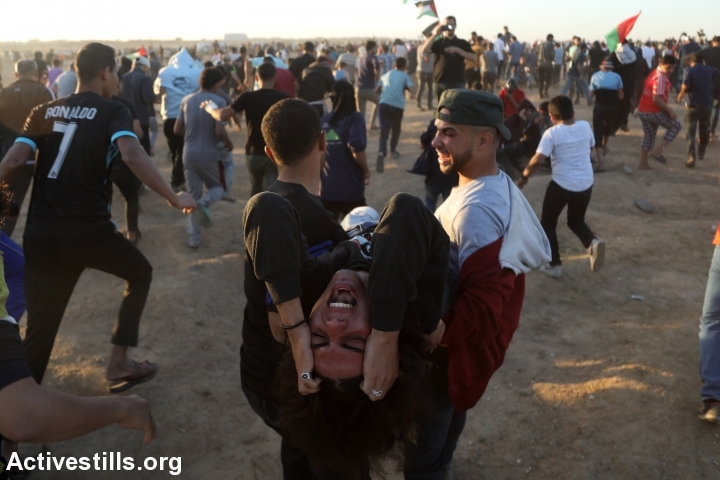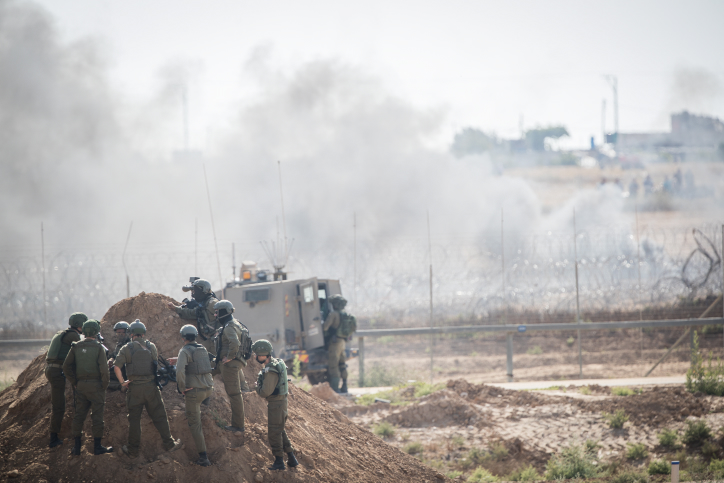The Israeli army admits that it secretly changed its policy once it realized that shooting unarmed protesters in the leg was lethal. Rights group says the revelation is an admission that Israel was killing protesters without any justification.

The Israeli military reportedly changed open-fire regulations for its snipers deployed along the Israel-Gaza fence after it became clear that they were unnecessarily killing unarmed Palestinian protesters, something human rights groups and others had been warning all along.
Israeli snipers and sharpshooters killed 206 Palestinian demonstrators and wounded thousands of others — including children, medics, and journalists — during the Great March of Return in Gaza. The ongoing weekly protests, which began in March of 2018, called for an end to Israel’s siege on Gaza and the right of return for Palestinian refugees.
Israeli journalist Carmela Menashe, the military reporter for Israel’s public radio station, tweeted earlier this week that the IDF made the change when it understood that “firing at the lower half of the body above the knee led to death in many cases, despite this not being the objective.” According to Menashe, the soldiers were instructed to “shoot below the knee, and later, at their ankles.”
A senior officer in the IDF’s counterterrorism school told Israeli news site Ynet that the snipers’ objective was “not to kill but to wound, so one of the lessons [learned] was what they were shooting at… At first we told them to shoot at the leg, we saw that this could kill, so we told them to shoot under the knee. Later we made the order more precise to shoot at the ankle.”
A statement published by Israeli human rights group B’Tselem on Wednesday accused Israeli officials of openly admitting that they knew their soldiers were killing people that, “even in the eyes of the state, had no reason to be gunned down.”
“No one bothered to change the orders, and the army continued to operate in a manner of trial and error, as if these were not real people who might be killed or wounded… People whose lives and the lives of their families have been destroyed forever,” said B’Tselem.
The Israeli military has long argued that the protests at the fence should be seen in the context of a long-running armed conflict with Hamas, and thus open-fire regulations are subject to the rules of armed conflict, which provide greater leeway for the use of lethal force.

Human rights groups and many others rejected that logic, arguing that treating civilian protests as armed conflict is illegal. At the height of the protests, as the casualties mounted, the prosecutor of the International Criminal Court published a warning that “violence against civilians — in a situation such as one prevailing in Gaza” could constitute war crimes. Anyone who orders, encourages or carries out that violence, she said, “is liable to prosecution before the Court.”
Despite the international criticism and calls for an independent investigation into the killing of unarmed demonstrators in Gaza, Israeli authorities doubled down on orders to open fire on unarmed protesters.
Last May, Israel’s High Court of Justice rejected two petitions from Israeli human rights groups demanding an end to the killing of unarmed civilians at the fence. The Israeli army, in that case, argued that live fire could be used in response to “violent disturbances that pose real and imminent danger to IDF forces or to Israeli civilians,” and that the rules of engagement allow for “accurate shooting at the legs of a key agitator or instigator in order to remove the danger of a violent riot.”
The state also added that “there is a systematic process of drawing operational lessons and implementing them,” that the army had sharpened its open-fire procedures in order to “further reduce the casualties to the extent possible,” and that cases in which Palestinians were killed were referred to the General Staff for further investigation.

